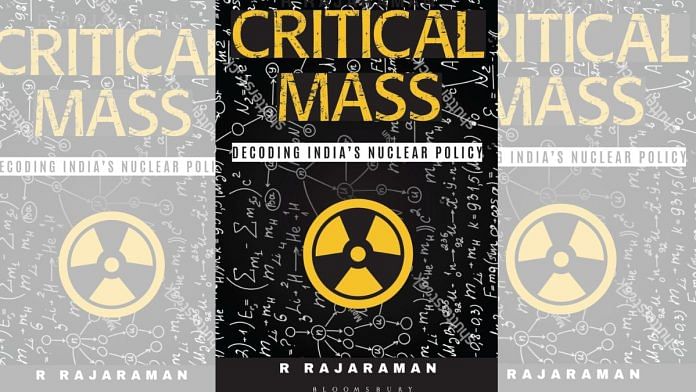New Delhi: A new book by R. Rajaraman, theoretical physicist and emeritus professor at the Jawaharlal Nehru University, now provides thought-provoking insight into India’s nuclear strategy and the geopolitical debates surrounding the use of nuclear weapons.
In ‘Critical Mass: Decoding India’s Nuclear Policy’, Rajaraman delves into the core components of India’s nuclear doctrine, namely ‘no first use’ and ‘credible minimum deterrence’. Rajaraman also unravels the complexity surrounding nuclear explosions, shedding light on their actual consequences and the subsequent fallout of radiation.
Published by Bloomsbury India, ‘Critical Mass: Decoding India’s Nuclear Policy’ will be released on 22 August on Softcover, ThePrint’s online venue to launch non-fiction books.
One of the most important components of the book, however, is its analysis of India’s nuclear policy of deterrence, with reference to neighboring states. Amid concerns that are being echoed in media and literature, Rajaraman contends that the effectiveness of the deterrent is not reduced even in scenarios such as China possessing thermonuclear capabilities or if Pakistan boasts a slightly larger arsenal.
What matters, the author notes, is India’s capacity to retain sufficient operational nuclear weapons for a retaliatory ‘second strike’ on any adversary that inflicts ‘unacceptable damage’.
The author also offers an intricate evaluation of the Indian government’s ambitious nuclear reactor programme, including a comprehensive analysis of the India–US nuclear deal and implications of the Nuclear Liability Law.
A world-renowned theoretical physicist, Rajaraman is also the founder of the International Panel on Fissile Materials. He was also a member of the Asia Pacific Leadership Network and a council member of the International Pugwash.
His personal experiences shine through as the book is written in a manner that it is accessible to a layperson, and enriched with visual aids, including photographs. The book accomplishes the objective of demystifying India’s nuclear policy, empowering readers to independently gauge the intricacies of strategic matters.
Also read:



